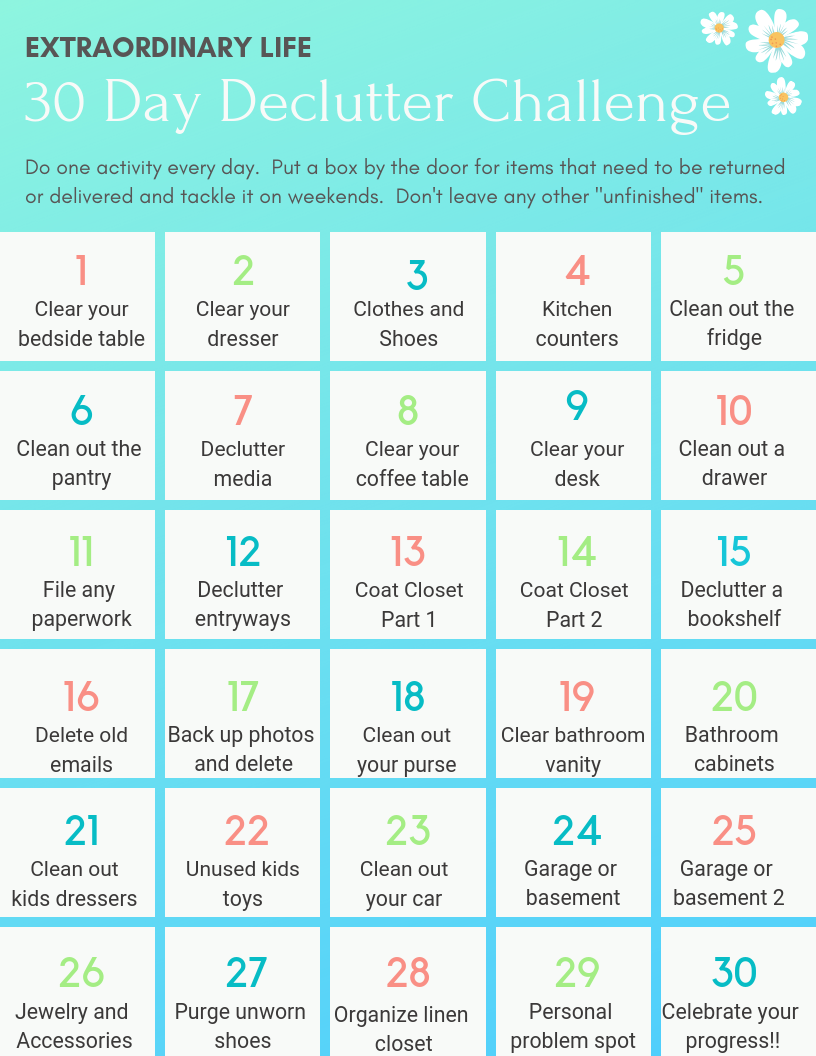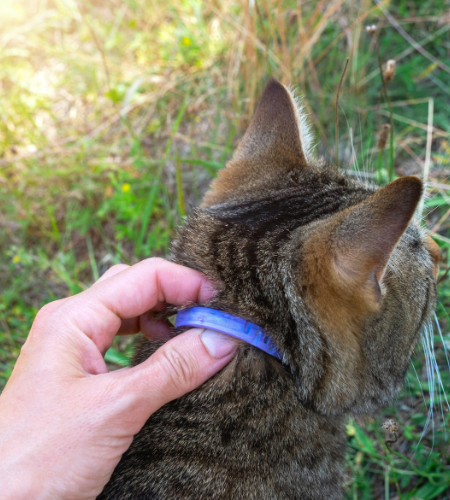Declutter Your Life: The 30-Day Minimalist Experiment

Table of Contents
Preparing for Your 30-Day Minimalist Declutter Journey
Before diving into your 30-day challenge, solid preparation is key. Setting realistic goals and creating a decluttering plan will ensure you stay motivated and avoid feeling overwhelmed.
Setting Realistic Goals
The key to a successful 30-day minimalist experiment is setting achievable goals. Don't try to tackle everything at once. Start small and build momentum.
- Declutter one drawer per day: A focused approach allows for manageable progress.
- Focus on one room per week: This breaks down the task into smaller, less daunting chunks.
- Discard 10 items daily: A simple, consistent goal that yields significant results over time.
Establishing realistic goals within your 30-day plan is crucial for maintaining motivation and successfully decluttering your life.
Identifying Your Clutter Hotspots
Before you begin, identify the areas in your home where clutter tends to accumulate. These are your "clutter hotspots," and tackling them first will yield the most significant visual impact and sense of accomplishment.
- Closets: Often overflowing with forgotten clothes and unused items.
- Drawers: A common hiding place for miscellaneous items and old paperwork.
- Countertops: Frequently cluttered with appliances, mail, and everyday items.
- Desks: A workspace easily overtaken by papers, pens, and office supplies.
Pinpointing these problem areas is a crucial step in creating an effective decluttering plan.
Gathering Your Supplies
Before you begin your 30-day declutter journey, gather the essential supplies you’ll need to streamline the process. Having these items readily available will help you stay organized and efficient.
- Boxes for donations: Clearly label these boxes for easy sorting and transport.
- Trash bags: For discarding unwanted items that are beyond repair or reuse.
- Cleaning supplies: To clean and organize areas after decluttering.
- Labels: To clearly identify boxes for donations, recycling, or storage.
Having your decluttering supplies readily available will ensure a smoother and more efficient decluttering process.
The Daily Decluttering Process: Tips & Techniques for Success
Now that you're prepared, let's explore some effective techniques to make your daily decluttering sessions efficient and rewarding.
The One-Minute Rule
This simple rule saves time and energy. If deciding whether to keep or discard an item takes less than a minute, discard it.
- Expired coupons
- Broken pens
- Single socks without a pair
- Empty containers
Applying the one-minute rule helps you quickly eliminate items that are no longer useful.
The 20/20 Rule
This strategy encourages you to discard items that cost less than $20 and can be easily replaced within 20 minutes.
- Cheap tools
- Damaged kitchenware
- Inconveniently sized items
- Duplicate items
Using the 20/20 rule can help you get rid of items without agonizing over their value.
The Four-Box Method
This method uses four boxes to categorize items: Keep, Donate, Trash, Relocate.
- Keep: Items you use regularly and value.
- Donate: Items in good condition that you no longer need.
- Trash: Items that are broken, damaged, or beyond repair.
- Relocate: Items that belong in a different location.
This decluttering strategy helps you sort items efficiently.
Mindful Decluttering
Decluttering isn't just about removing items; it's about making conscious choices about what you keep. Ask yourself these questions:
- Do I use this?
- Does it bring me joy?
- Do I need this?
Mindful decluttering helps you create a more intentional and less cluttered life.
Maintaining Your Minimalist Lifestyle After the 30-Day Challenge
The 30-day minimalist experiment is just the beginning. To fully enjoy the benefits of a clutter-free life, you need to incorporate new habits and strategies for long-term success.
Creating New Habits
To prevent clutter from returning, establish these habits:
- Regular decluttering sessions (weekly or monthly).
- A "one in, one out" rule for new purchases.
- Regularly donating unused items.
Building sustainable minimalism requires commitment and consistency.
Preventing Future Clutter
- Mindful shopping: Buy only what you need and love.
- Regular donating: Get rid of unused items regularly.
- Digital minimalism: Declutter your computer and phone.
Preventing future clutter requires conscious decisions about acquiring new items and regularly purging unused items.
Embrace the Joy of a Decluttered Life
Completing a 30-day minimalist experiment offers numerous benefits: reduced stress, improved focus, more space, and a greater sense of calm. By implementing the strategies discussed—setting realistic goals, identifying clutter hotspots, utilizing decluttering techniques, and maintaining new habits—you can successfully declutter your life and experience the positive transformations of minimalism. Start your declutter journey today with our 30-day minimalist experiment! [Link to checklist/worksheet]

Featured Posts
-
 Financial Strain On Veterinary Practices Vets Speak Out To The Bbc
May 31, 2025
Financial Strain On Veterinary Practices Vets Speak Out To The Bbc
May 31, 2025 -
 Strange Basement Find Baffles Plumber And Homeowner
May 31, 2025
Strange Basement Find Baffles Plumber And Homeowner
May 31, 2025 -
 Bodensee Katastrophenuebung Einsatzkraefte Trainieren In Hard
May 31, 2025
Bodensee Katastrophenuebung Einsatzkraefte Trainieren In Hard
May 31, 2025 -
 Cleveland Fire Station Closure Temporary Halt Due To Water Leaks
May 31, 2025
Cleveland Fire Station Closure Temporary Halt Due To Water Leaks
May 31, 2025 -
 First Home Series Defeat For Tigers Rangers Take The Victory
May 31, 2025
First Home Series Defeat For Tigers Rangers Take The Victory
May 31, 2025
